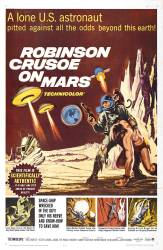Revealing mistake: The ground beneath Mantee's feet gives way with him falling through the hole. Boy, that hole sure looked rectangular.
Revealing mistake: Early in the film, when Commander Chris Draper is still wearing his space gear on the Martian surface, multiple helmet reflections reveal that at least two and as many as four powerful artificial light sources (in addition to the Sun) were used to illuminate the exterior scenes.
Revealing mistake: Several scenes used a fake monkey to protect the live one from injury. The "stunt monkey" is most obvious in the scenes where Draper is climbing the steep cliff walls with the mannequin attached to his rucksack.






Answer: In the movie before he discovers his water supply and watches the survival video, he is shown grooming himself and shaving.